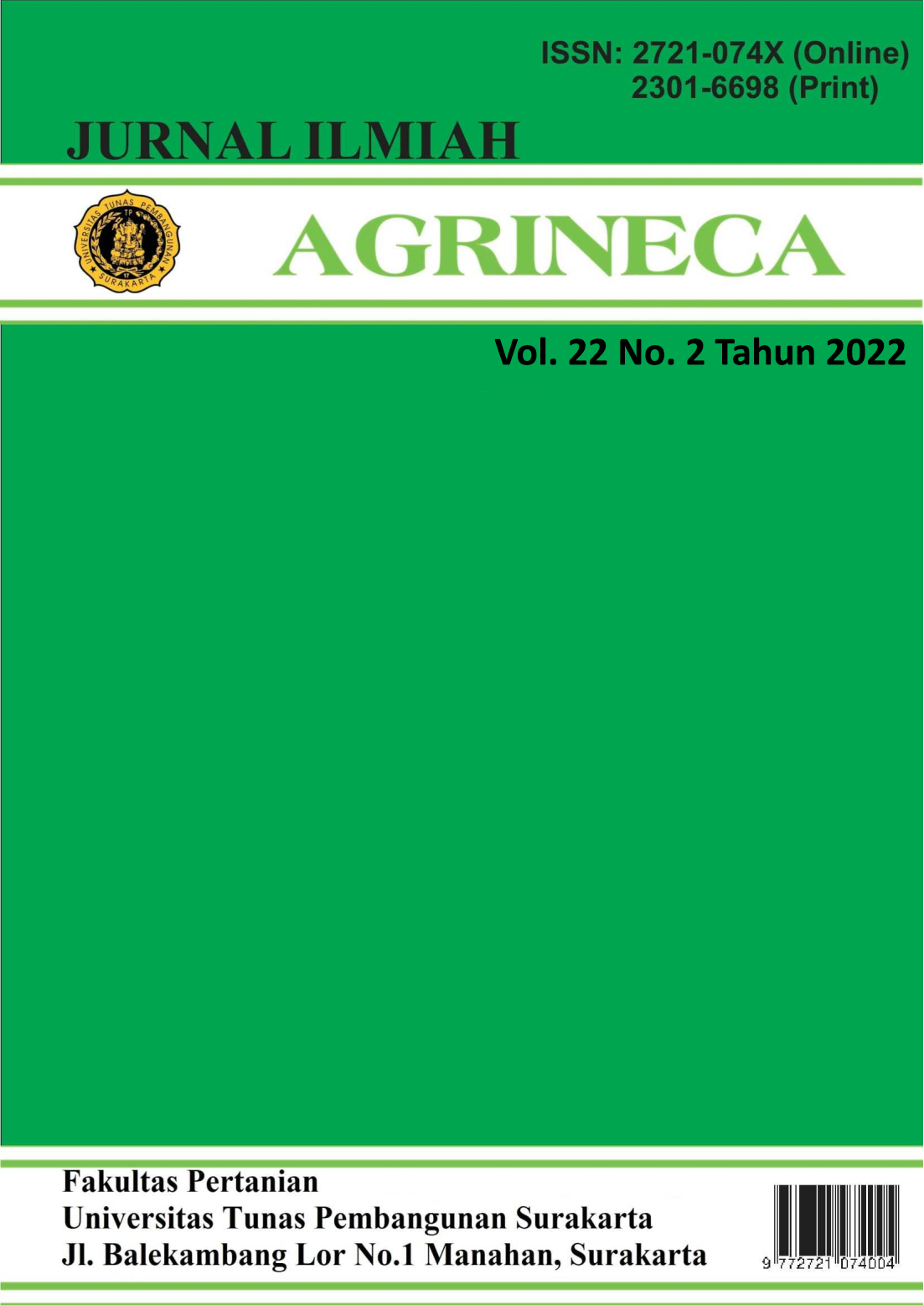Effects of Husk Ash Dosage and Leaf Fertilizer Concentration on the Growth and Results of Celery Plants (Apium graveolens)
Abstrak
This research determined the effect of husk ash and POC Nasa leaf fertilizer on celery growth and yield. This research was done in Karangasem Village, Sraten, Gatak District, Sukoharjo Regency, at 129 m above sea level. The success of celery plant growth depends on principal growth and suitable cultivation procedures. Husk ash is one of the soil binders that keeps nutrients available for plants. The silica content can strengthen the leaves. In the experiment, plants that were given roasted husks had more erect leaves. Besides strengthening leaves, the phosphate content in husk ash can strengthen plants and encourage the development of plant cells—a good place to live for microorganisms (beneficial microbes). The presence of husk ash as a mixture of soil media can bind nutrients in the soil so that they are always available for the plant. This study used the factorial method with a completely randomized design (CRD) pattern consisting of two treatment factors. The treatment factor was administering husk ash dose A (A0 = without husk ash, A1 = 40 grams; A2 = 50 grams). Concentration of foliar fertilizer POC Nasa P (P0 = without POC Nasa, P1 = 2 cc/ltr, P2 = 3 cc/ltr). The data obtained were analyzed with a 5% variance. If it had a significant effect, it continued with the 5% DMRT test. The results showed that the administration of a combination treatment of husk ash dose and concentration of POC Nasa (AxP) leaf fertilizer was significantly different to the number of leaves per strand. The treatments of various doses of husk ash were not significantly different from the six observation parameters, and the concentration treatment of POC Nasa leaf fertilizer was not significantly different from the six observation parameters. The highest number of plant leaves, 78 g, was obtained in the combination of A2P1 (husk ash 50 g and a concentration of POC Nasa leaf fertilizer of 2 cc/l). The lowest number of plant leaves, 22 g, was obtained in the combination of A2P2 (Husk Ash 50 g and a concentration of POC Nasa Leaf Fertilizer 3 cc/l).

